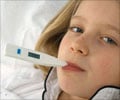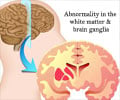
According to the Centers for Disease Control and Prevention (CDC), autism spectrum disorders (ASDs) are a group of developmental disabilities that can significantly impact social interaction, communication and behavior. The CDC estimates that on average, 1 in 110 U.S. children has an ASD (which is four times more likely to develop in boys than in girls). Medical evidence suggests that the prevalence of epilepsy in autism ranges from 7% to 46%.
Researchers on the present study team, led by Orrin Devinsky, M.D., Professor of Neurology, Neurosurgery, and Psychiatry at NYU School of Medicine and Director of the NYU Comprehensive Epilepsy Center in New York, reviewed clinical and laboratory data for patients with idiopathic autism evaluated at the Center during a 20-year period. Seizures were classified using ILAE criteria, with treatment resistance defined as failure of adequate trials of two tolerated AED regimens. "Treatment-resistant epilepsy is common among patients with autism, and more than one-third of patients in our study group had TRE," said Dr. Devinsky. "Among patients for whom we had complete AED and seizure control data, 55% had TRE."
Among the 127 patients with autism and at least one epileptic seizure, 34% had TRE and 28% were seizure-free. The remaining 39% of patients with autism and epilepsy had infrequent seizures or insufficient data to properly categorize them. In patients with TRE, researchers found that seizure onset was at an earlier age than in patients who were seizure free. TRE patients also had more developmental regression, as well as motor and language delays, than seizure-free participants.
Three patients had surgical resection and one underwent anterior callosotomy; these surgical treatments provided little or no improvement in seizure status. In nine patients with vagus nerve stimulator (VNS) implantation, limited improvement of seizures was noted in two patients and no improvement in seven patients. "In patients with autism, we found that surgical and VNS outcomes were less favorable, providing a lower rate of seizure freedom, than in other TRE populations," concluded Dr. Devinsky. "Further studies are needed to explore the association between chronic epilepsy and autism."
Advertisement















